Visually exciting, thought-provoking, and profoundly conceived, Wire(less) Connections, awakens the curious mind. From spider’s webs to the world wide web, from the metaphoric end of the rope to the first connection that nourishes us into being – the umbilical cord, and the mythological thread of life in the hands of the three fates – the physical, visual, poetic and metaphoric are intertwined through the works of Israeli and international artists, creating many options and possibilities for experiencing, viewing, and discussion. Curated by Daniella Shalev, the exhibition will be on display in the Weinstein Gallery of the Youth Wing at the Israel Museum, Jerusalem, through March 18, 2017.
There is so much to explore in this exhibition! The works on display were not necessarily created for children, but were rather culled from the work of diverse contemporary artists. Entering the building, one is confronted with Edna Ohana’s 13,000 Meters, an intricate wire maze with pathways inside, inviting the visitor to literally enter the art work, while the exhibit as a whole may be seen as an invitation to figuratively enter the world of art and experience the thoughts and feelings it arouses. Although this is not art made for children, and the general museum rule of “look, but do not touch” applies to most of the objects on display, what this exhibit does do is suggest ways of approaching these works, connecting them by association and igniting the imagination.

Orit Akta-Hildesheim’s Self-Portrait is an intriguing point of departure for conversations about portraits, identity, rope as a physical and symbolic entity, and the fascinating relationship between the realistic and technically impressive rendering of the rope in this oil painting, and its metaphoric resonance. On the other hand, some viewers may want to race by with the fleeting thought: hey, rope! Depending on your age, perspective, and the ages and inclinations of your companions, there are many different ways to experience this exhibit.
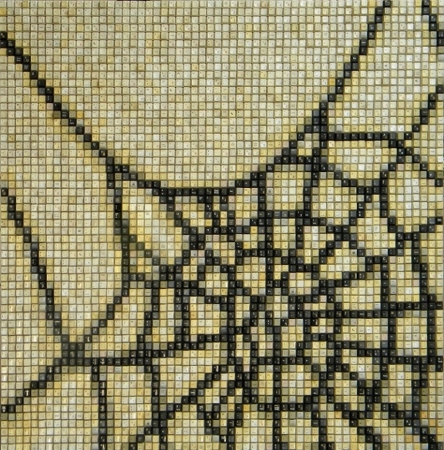
Adjacent to many of the art works are small bubbles of fun facts on questions as varied as – how fast can a person jump rope, the function of the spinal cord and the difference between the way a telephone line works and the way WiFi works. Efrat Peleg’s Wide Web 2 is juxtaposed with the lyrics to Aviv Geffen’s song “Teze Mehamahshev” (Get Out of the Computer).
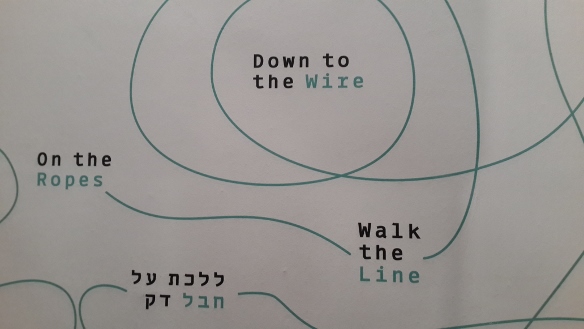
As one climbs the stairs to the second floor, the walls are playfully covered with idioms and phrases relating to ropes, threads and wires. Looking up, Lali Fruheling’s site-specific installation suggests a spider’s web suspended up above, illuminated, iridescent.
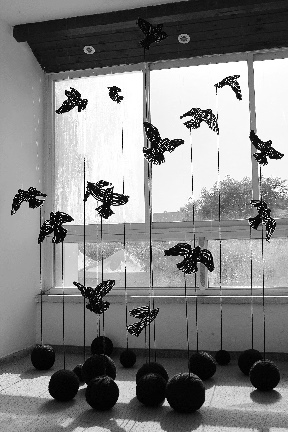
Flights of fantasy grounded in the tactile presence of the material, Maya Gelfman’s Blackbirds seek to soar. Many of the works reflect meticulous technique, and Sisyphean labor intense processes, as seen in Debbie Smyth’s The Tightrope Walker, often in combination with a wild imagination as seen in Gil Yefman’s Blood Moon.
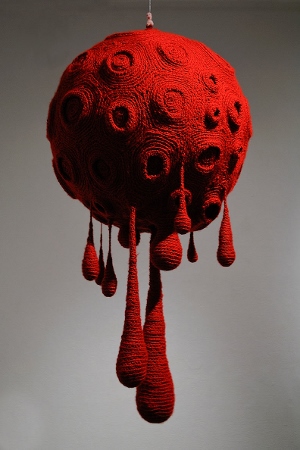
Dvora Morag’s A Set Table is playfully suggestive, taking a familiar scene – the communal or family meal, and literally lifting it out of context, creating an opportunity for questions and reflection.
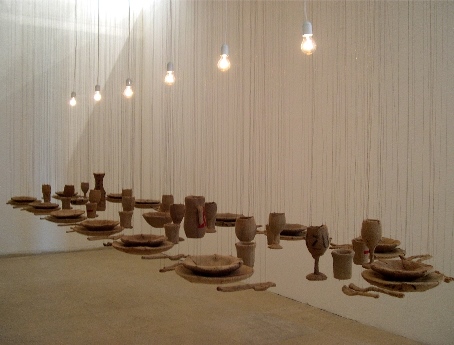
Some images are more complex, such as Bill Viola’s An Instrument of Simple Sensation and some may raise thoughts on serious and difficult topics, such as Michael Druks’ Maintenance Work. It is one of the strengths of this exhibit, that it does not place limits on the ability of young visitors to think, feel, and comprehend. For those seeking more active immediate gratification, there is a fun installation that lets the daring visitor figuratively walk a tightrope above city traffic, and another that invites visitors to make a wish or promise and add their own colorful contribution to the wishing tree.
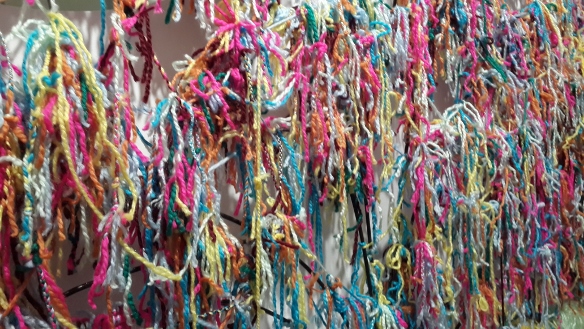
It’s a colorful, diverse, challenging and exciting exhibit with something to offer visitors of all ages. At the time of my visit, the age range of visitors was roughly from a year and a half to 83, everyone was very actively engaged, and there were many smiles all around.
Wire(less) Connections will be open through March 2017. In the month of August 2016, there is free admission for children until the age of 17 on Tuesdays and Saturdays (does not include groups, performances and workshops). Visiting hours and ticket information is available on the Israel Museum, Jerusalem website.
Curator: Daniella Shalev; Associate Curator: Smadar Gafni; Exhibition Design: Studio de Lange, Tel Aviv; Logo Design: The Studio (Avigail Reiner & Shlomi Nachman); Catalogue Design: Re-Levant Design





